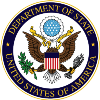National Day of Human Trafficking Awareness
By: Susan Coppedge, Ambassador-at-Large to Monitor and Combat Trafficking in Persons at the U.S. Department of State.
January 11 is National Day of Human Trafficking Awareness. The United States Congress designated this day in 2007 with the aim of raising awareness and encouraging people to take action to combat human trafficking. January is also National Slavery and Human Trafficking Prevention Month, as proclaimed by President Obama. Congress and the Obama Administration have demonstrated bipartisan support and commitment to amplify the importance of combating human trafficking in all its forms.
Human trafficking, also known as modern slavery, is a crime involving the exploitation of a person for compelled labor or a commercial sex act through the use of force, fraud, or coercion. It affects every demographic, exists in virtually every country in the world, and reaps an estimated $150 billion in illicit profits for human traffickers globally.
°Modern slavery is an especially egregious crime because it involves physical or psychological abuse and deprives people of their free will. Human traffickers profit from the exploitation of their victims, who are often isolated, manipulated, and threatened. Victims also remain silent because they fear their families may be harmed if they go to the authorities. Compounding their plight, victims of human trafficking also frequently don’t identify themselves as victims or know their legal rights.
Human trafficking is pervasive worldwide and cannot be prevented by any one government alone. As the crime crosses political, economic, and social divides, ultimately the fight against modern slavery unites us. It requires the commitment of multiple stakeholders, including governments and law enforcement, NGOs, first responders and health care providers, the private sector, survivors, consumers, and the general public. There are ways each of us can make a difference. To combat human trafficking effectively, we must identify those who may be especially vulnerable, recognize the signs of human trafficking, and take preventive actions wherever possible.
My role as Ambassador to Monitor and Combat Trafficking in Persons is to lead the United States’ global engagement against human trafficking. During my travels, one of the most common questions I am asked is: What can I do to combat human trafficking? People who learn what human trafficking is, and how it degrades the rights of individuals and robs them of their freedom, want to stand up and take action.
Over the past decade, we have seen concrete examples of what happens when individuals harness their power to make a difference. For example, a lay minister at a Church near Tulsa, Oklahoma helped workers from India escape from their traffickers at a factory across the street from the church after they snuck out to attend services. The minister provided the workers with support and shelter. In New York, a concerned worker at a donut shop called police when a distressed Indonesian woman described with gestures the abuse she had experienced when forced to work in the home of a wealthy couple who lived nearby on Long Island. In another case, a delivery cab driver in Sacramento, California called police when he suspected two child sex traffickers were delivering a minor to a hotel room. He listened to the conversation as the two sex traffickers were making arrangements to meet a client. After the traffickers left he called police.
It is clear from these examples and countless others around the world that each and every one of us can play a role in ending human trafficking. We should all consider making a pledge today, and this month, to do our part to fight this horrific crime.
If you are up to the challenge here are a few resources you can use to educate yourself and take action:
- Learn the different forms of human trafficking.
- Understand the myths and facts.
- Learn how we are all touched by modern slavery.
- Do something. Here are 15 Ways You Can Help.
While we recognize this day and month of awareness, modern slavery continues to occur every day, in every country in the world. We must stay vigilant and aware of what is happening around us, and find ways to help. We will continue to fight this battle, and our efforts will be magnified if we all join together.
This story originally appeared on DipNote, the U.S. Department of State’s Official Blog.
